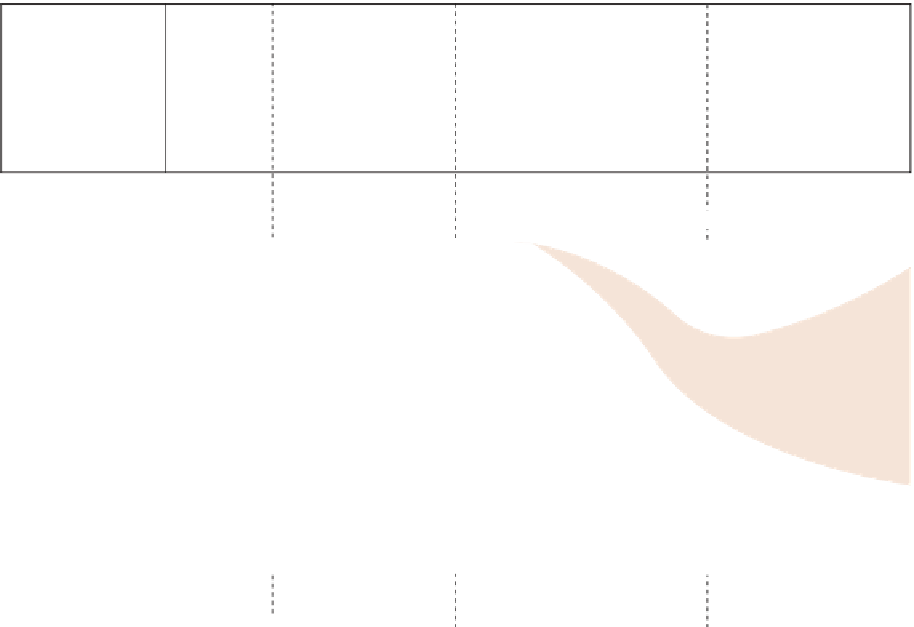Geoscience Reference
In-Depth Information
VOLCANIC
(fine-grained
or porphyritic)
HYPABYSSAL
(medium-grained)
PLUTONIC
(coarse-grained)
BASALT
ANDESITE
DACITE
RHYOLITE
DOLERITE
GRANOPHYRE
MICROGRANITE
PERIDOTITE
GABBRO
DIORITE
GRANODIORITE
GRANITE
Minerals
Increasingly dark
Increasingly viscous
100
QUARTZ
Anorthite
(calcium-
rich)
80
ORTHOCLASE
FELDSPAR
(potassium-rich)
60
PLAGIOCLASE
FELDSPAR
PYROXENE
40
OLIVINE
e
Albite (sodium-rich)
20
HORNBLENDE
0
ULTRA-
MAFIC
MAFIC
INTERMEDIATE
ACID
40
45
50
55
60
65
70
75
% SiO
2
by weight
Figure 12.3
Mineral composition, texture, viscosity and emplacement environment of the more common igneous rocks.
greater depth.
of south-west England. This diapiric batholith, 250 km
long and over 55,000 km
3
in volume, is a residual part of
the European Hercynian orogen and now forms high
ground on Dartmoor, other Cornish upland and the Isles
of Scilly. For comparison, erosion has exposed a shallow
Tertiary sub-volcanic landscape with cone sheets, ring
dykes and volcanic plugs in the Ardnamurchan ring
complex of the Scottish Highlands
(
Figure 12.5c
)
.
contaminates and gas-water volatiles. Consequently, there
are broad
volcano-orogenic
associations. B-subduction
shows an evolutionary progression, from basalt q
andesite qdacite qrhyolite volcanoes with increasing
age and distance from the trench. Dacite is intermediate
between andesite-rhyolite, with 63-69 per cent silica. Rare
A-subduction volcanoes are usually of dacite-rhyolite
composition.
The presence of dissolved gases and cooler, more
viscous magma is the recipe for spectacular eruptions.
Water (forming over 90 per cent by mass) together with
smaller quantities of sulphur, hydrogen, chlorine and
carbon gases (SO
2
,H
2
S, H
2
,HCl,CO
2
) vaporizes in the
near-surface lower-pressure environment. This forms an
explosive mixture - rather like the decompressive effects
of uncorking a champagne bottle. Sea water may enter the
vent in marine environments and create a
hydrovolcanic
effect, with an explosive expansion of steam. Surtsey
(1963) developed in this way in Iceland. The existence of
Extrusive and eruptive activity
Volcanoes are the rock stars of the supercontinental cycle!
However, less than 10 per cent of new magma erupts
annually from terrestrial volcanoes and we know that
basaltic lava effusion at mid-ocean ridges accounts for
most extrusive activity
(
Figure 12.4b
)
. Progression from
effusive lava flow to explosive volcanic eruption closely
follows the fall in viscosity with increased silicate content,
falling melt temperature and parallel increases in crustal







































































